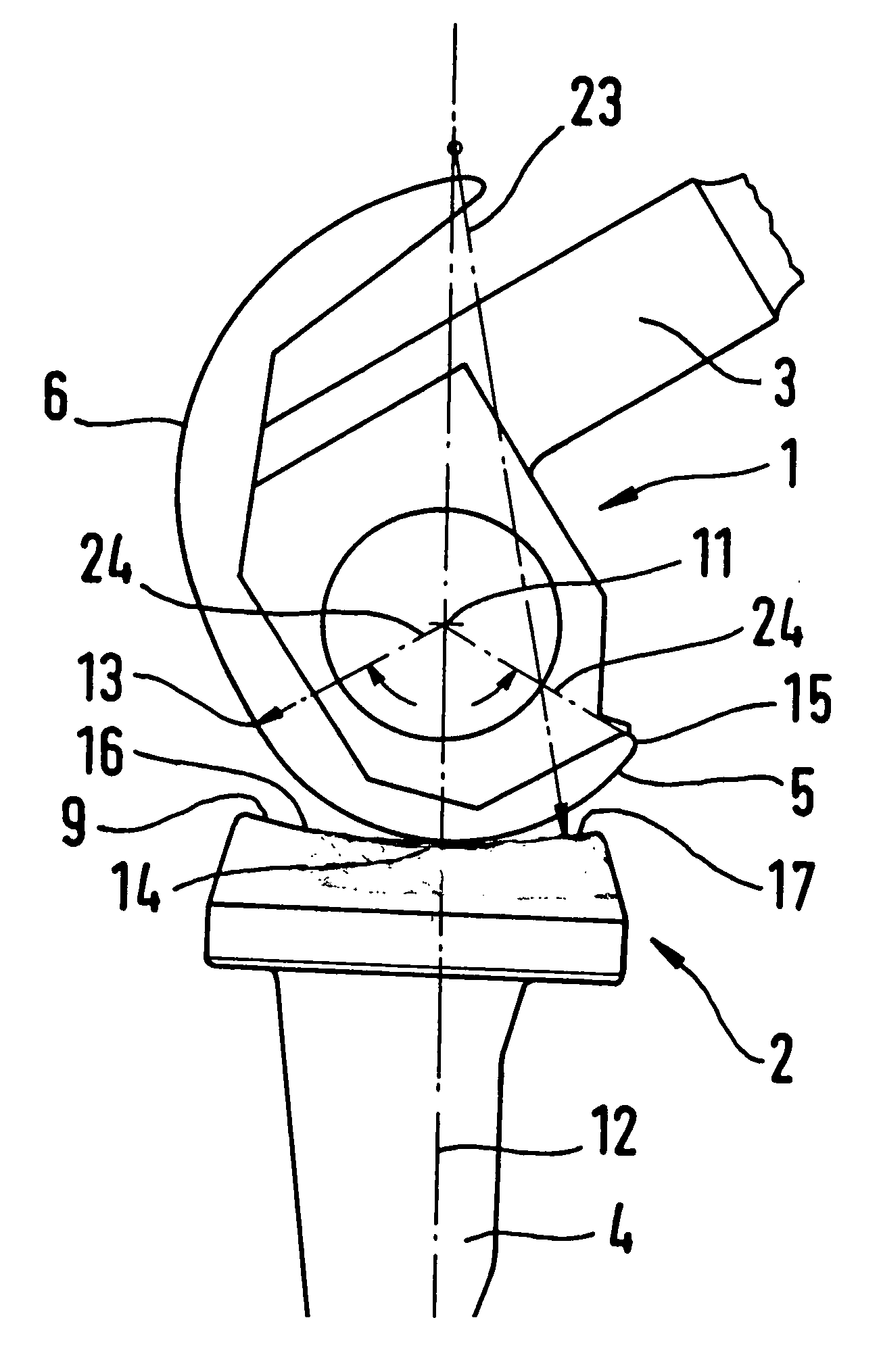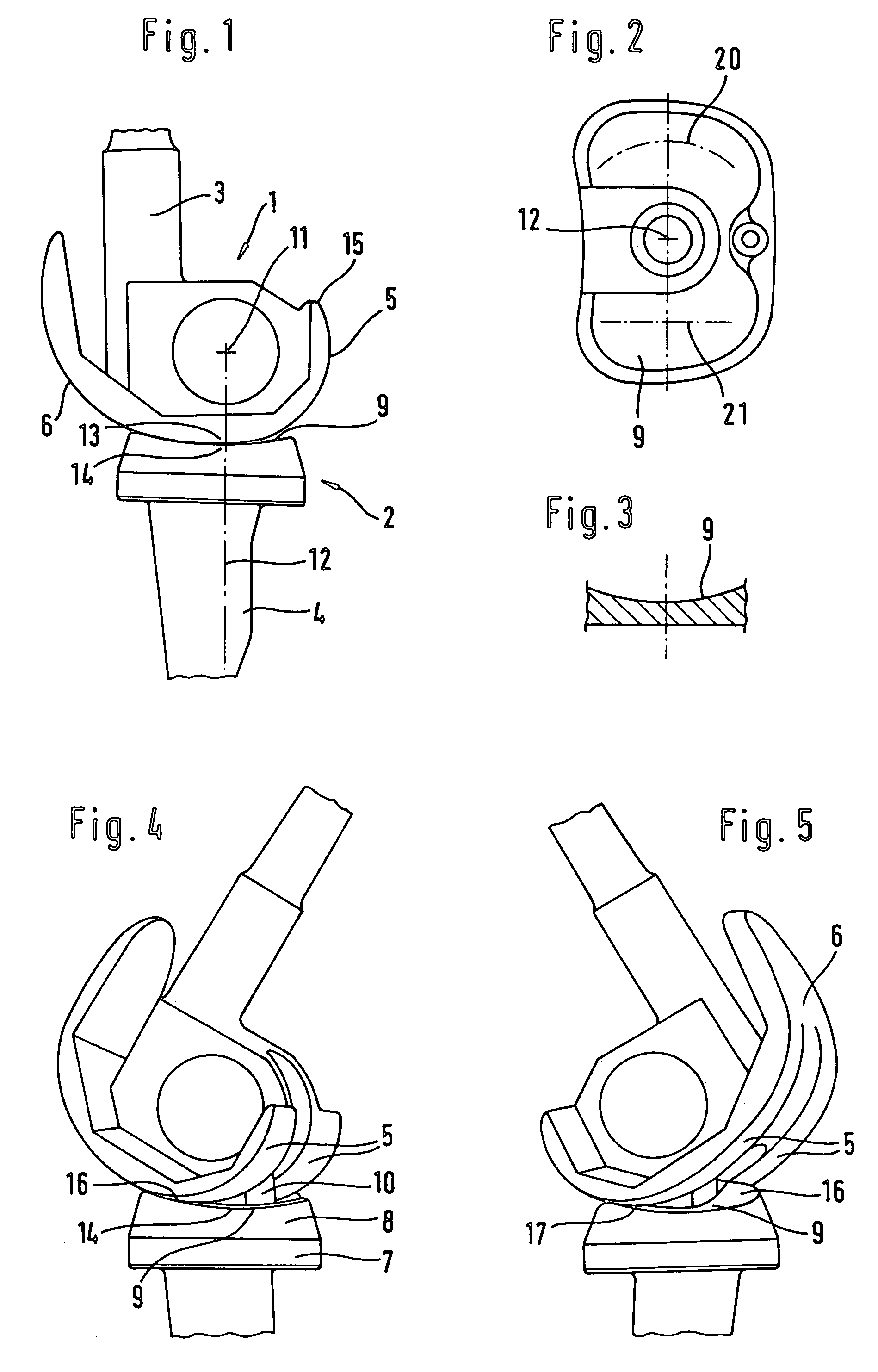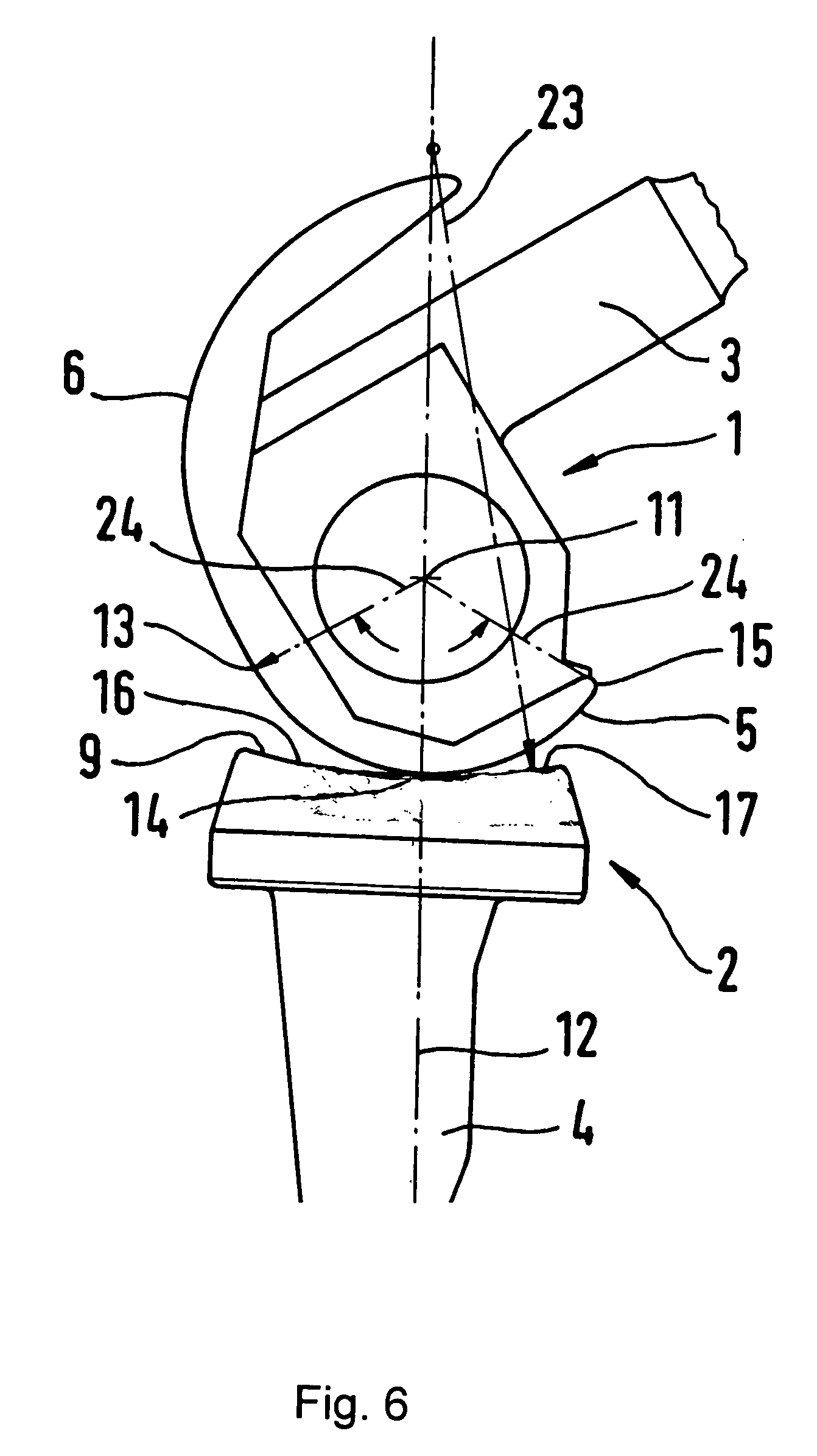Knee prosthesis
a knee joint and prosthesis technology, applied in the field of knee joint prosthesis, can solve the problems of increased wear, undesired bending moment in the area of the rotation bearing, and not just, and achieve the effect of clear and simple geometry relationships
- Summary
- Abstract
- Description
- Claims
- Application Information
AI Technical Summary
Benefits of technology
Problems solved by technology
Method used
Image
Examples
Embodiment Construction
[0014]The prosthesis has a femoral part 1 and a tibial part 2 which, in a known manner, are to be anchored via pins 3, 4 respectively at the lower end of the femur and at the upper end of the tibia. The femoral part 1 has a pair of condylar sliding surfaces 5 which, at the front, come together to form a patellar sliding surface 6. The tibial part 2 forms, at the top, a support plate 7 on which the so-called tibial plateau 8 made of a material promoting sliding, for example polyethylene, is anchored, said tibial plateau 8 forming the tibial sliding surfaces 9 on which the condylar sliding surfaces 5, preferably made of polished metal, slide. The femoral part 1 and the tibial part 2 are coupled to one another by an intermediate part 10 which on the one hand, with the femoral part 1, forms a flexion bearing with axis 11, and, on the other hand, with the tibial part, forms a rotation bearing with axis 12. Details of this construction are explained in European patent applications 1,110,2...
PUM
 Login to View More
Login to View More Abstract
Description
Claims
Application Information
 Login to View More
Login to View More - R&D
- Intellectual Property
- Life Sciences
- Materials
- Tech Scout
- Unparalleled Data Quality
- Higher Quality Content
- 60% Fewer Hallucinations
Browse by: Latest US Patents, China's latest patents, Technical Efficacy Thesaurus, Application Domain, Technology Topic, Popular Technical Reports.
© 2025 PatSnap. All rights reserved.Legal|Privacy policy|Modern Slavery Act Transparency Statement|Sitemap|About US| Contact US: help@patsnap.com



